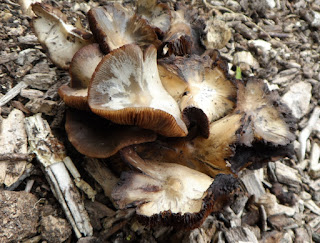 |
| Phallus impudicus - Stinkhorn |
 |
| Sphagnurus paluster - Sphagnarum Greyling |
 |
| S. paluster spores |
 |
| Parasola misera - Least Inkcap |
 |
| Parasola misera |
 |
| Xerocomellus chrysenteron - Red-cracking Bolete |
 |
| X. chrysenteron |
 |
| X. chrysenteron spores |
 |
| Entoloma hebes - Pimple Pinkgill |
 |
| Entoloma hebes |
 |
| Entoloma hebes spores |
 |
| Xylaria cinerea - immature growth |
 |
| Psilocybe cyanescens - Blueleg Brownie |
No comments:
Post a Comment